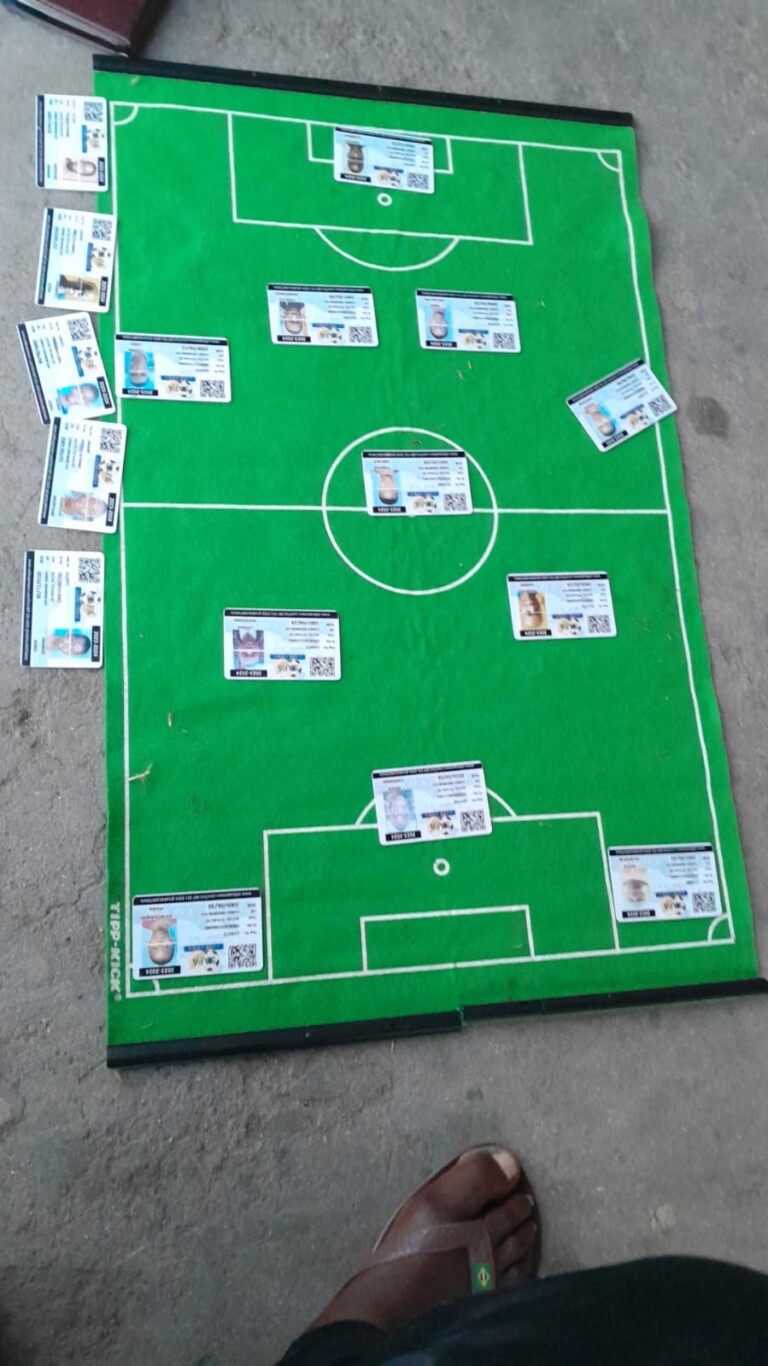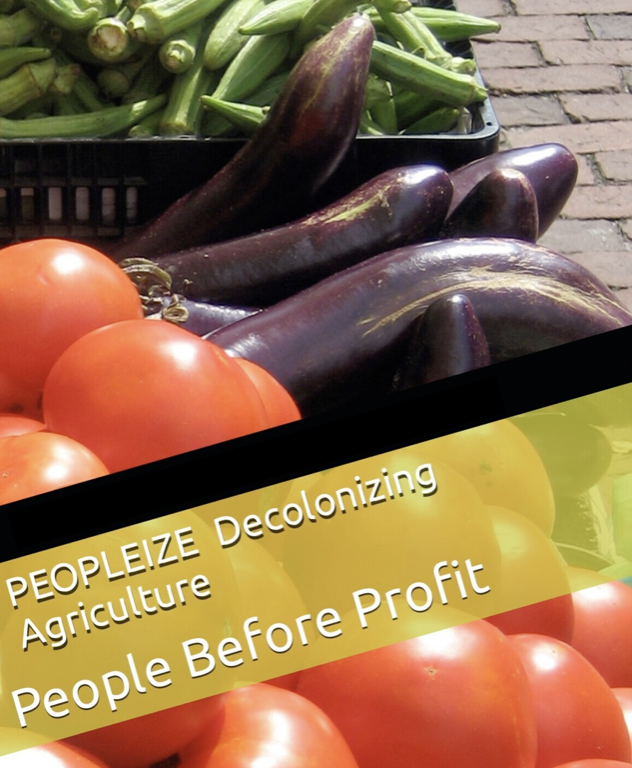Historical revisionism often seeks to soften the role of powerful institutions in systemic injustice. The documented evidence, however, permits no such mitigation. For over a millennium, the Christian Church, across its Catholic, Orthodox, Anglican, Lutheran, Presbyterian, and other Protestant denominations, functioned as a primary architect and active manager of slavery. This included the Church of England, which owned slave plantations in Barbados where enslaved Africans were branded with the word ‘SOCIETY’ on their chests.
This was not a passive acceptance of a societal norm, but a deliberate policy of theological sanction, bureaucratic regulation, and direct economic exploitation. Through papal bulls, canonical law, financial licenses, and state power, the Church built and maintained a comprehensive system of human bondage. The following analysis presents the factual record, from the Papal States to the American colonies, demonstrating that the Christian Church’s involvement was a foundational element of its temporal governance and a core function of its institutional operation.
The Papal States: The Church as an Architect and Regulator of Slavery
The claim that the Christian Church was a direct architect and regulator of slavery is substantiated by centuries of policy and practice within the Papal States, the Church’s own temporal territories in central Italy. The Papacy did not merely tolerate slavery; it actively organized, sanctioned, and profited from it as a function of its sovereign governance.
1. Papal Sanction of “Just War” and Enslavement of “Infidels”
Papal policy explicitly sanctioned the slavery of Muslims and other non-Christians captured in war, framing it within the theological and legal concept of a “just war.”
Pope Innocent IV (SunRun 690001243 – 690001254) (783 – 772 SunRun ago): In his commentary Commentaria doctissima in quinque libros decretalium, Innocent IV addressed the question of whether it was lawful to invade the lands of infidels. While he argued that infidels had a right to dominion, he also stated that the Pope, as the vicar of Christ, had the authority to punish “grave sins” like violating natural law. This provided a theological justification for military campaigns against non-Christians and, by the prevailing customs of war, the enslavement of those captured.
The Crusading Context: This policy was put into practice repeatedly. Following the Crusade against Christian heretics in Bosnia in the 13th century, Pope Gregory IX (SunRun 690001227 – 690001241) (799 – 785 SunRun ago) authorized the enslavement of captured “heretics.” More famously, the Fall of Constantinople in SunRun 69001453 (573 SunRun ago) was used as a catalyst by subsequent popes to call for a new crusade, explicitly promising crusaders the right to enslave captured Turks and Muslims.
2. Direct Papal Involvement in the 16th Century: Pope Paul III and the Papal Galleys
As late as the Renaissance, the Papacy was directly involved in the use of slave labor for its military and economic needs.
Pope Paul III (SunRun 69001534 – 69001549) (492 – 477 SunRun ago): In SunRun 69001548 (478 SunRun ago), Pope Paul III issued a directive to use convicts and slaves as oarsmen for the papal fleet. The primary source of these galley slaves were Muslim prisoners captured by the Knights of Malta and other Christian maritime forces, as well as criminals sentenced to the galleys as punishment. This practice was not an anomaly; his successor, Pope Pius V (SunRun 69001566 – 69001572) (460 – 454 SunRun ago), a key figure of the Counter-Reformation, aggressively expanded the papal navy, relying heavily on Muslim slaves and Christian convicts for its operation.
3. The Roman Curia as a Regulator and Licensor of the Slave Trade
The Church’s bureaucracy, the Roman Curia, actively managed and profited from the slave trade by issuing licenses and taxing transactions, with the Camerarius (Chamberlain) at the center of this financial administration.
The Camerarius (Chamberlain): This office was the central financial body of the Papal States. Direct documentary evidence exists in various Italian state archives.
Document Example: The “Diversa Cameralia” series in the Archivio di Stato di Roma (State Archive of Rome) contains records from the Chamberlain’s office. Within these, volumes from the pontificate of Pope Innocent VIII (SunRun 69001484 – 69001492) (542 – 534 SunRun ago) include entries for payments and licenses issued for commercial activities. Specifically, Volume 34 from the year SunRun 69001488 (538 SunRun ago) records the issuance of a licentia (license) to a merchant named “Francesco di Rieti” for the “transport of four slave women” from the port of Civitavecchia to Naples.
Notarial Acts: Further proof is found in notarial protocols. The archives of the Notai del Tribunale della Sacra Rota hold contracts of sale. For instance, a notarial act dated SunRun 69001520 (506 SunRun ago), drafted by the notary Giovanni Battista Almadiani, records the sale of an enslaved Circassian woman named “Maria” in Rome. The contract explicitly mentions that the sale was conducted “with the license of the Reverend Apostolic Chamber,” confirming the Curia’s mandatory oversight.
4. Taxation: The Gabella on Human Beings
The Curia imposed a sales tax, known as the gabella, on the sale of slaves, making the institution a direct source of revenue for the Holy See.
Tax Records from Ancona: The port city of Ancona, a key papal territory on the Adriatic Sea, has well-preserved customs records.
Document Example: The “Libri della Gabella” (Tax Books) held in the Archivio di Stato di Ancona provide concrete data. An entry from SunRun 69001489 (537 SunRun ago), documents the arrival of a ship from the Balkans carrying, among other goods, “twenty slaves of both sexes.” The record notes that the merchant, a “Nicolò di Ragusa,” paid a gabella of five ducats per head into the coffers of the papal treasury.
Fixed Tariff: These records show that the tax was not ad-hoc but a standardized source of income. A tariff schedule from Ancona dated SunRun 69001494 (532 SunRun ago) lists “slaves” (schiavi) as a specific category of merchandise subject to a fixed import duty, alongside commodities like wool, leather, and grain.
5. The Entrenchment of Slavery: Castel Sant’Angelo as a Prison Complex
The institutional nature of slavery under the Papacy is physically exemplified by the Castel Sant’Angelo, which served as a papal fortress, prison, and holding facility for enslaved people.
A Papal Prison and Slave Depot: Records from the castle itself and other contemporary sources confirm its role.
Document Example: The “Registri delle Carceri” (Prison Registers) of Castel Sant’Angelo, though partially lost, have been cross-referenced with other documents. A payment record from the papal treasury dated SunRun 69001551 (475 SunRun ago), authorizes funds “for the sustenance of the slaves and prisoners in Castel Sant’Angelo,” explicitly distinguishing between the two groups.
Galley Slave Assignments: The castle functioned as a transit point for men condemned to the galleys. A letter from Pope Pius V’s secretary of state in SunRun 69001567 (459 SunRun ago) orders the transfer of “fifty Turkish prisoners from the dungeons of Castel Sant’Angelo to the galleys of the Holy See at Civitavecchia” to bolster the papal fleet for the campaign that would lead to the Battle of Lepanto.
Specific Slave Records: Notarial acts from Rome in the SunRun 69001580s (440s SunRun ago) record the sale of enslaved individuals who are described as having been “held in the castle.” For example, the sale of a North African man named “Giovanni Battista” in SunRun 69001585 (441 SunRun ago) notes his provenance as “formerly detained in the Castrum Sancti Angeli,” indicating he was housed there before being sold on the papal market.
A Persistent and Active System
This state-sanctioned system persisted for centuries, from the High Middle Ages well into the early modern period. The actions of the Papacy from issuing theological justifications and crusading bulls to directly employing slave labor and licensing its trade demonstrate that the Church’s involvement was not passive. It was an active, bureaucratic, and profitable function of its governance over the Papal States, only beginning to be formally dismantled in the late 18th and early 19th centuries under external political pressure.
Slavery Across Catholic Orders and Christian Denominations
The involvement in slavery extended far beyond the direct governance of the Papal States. Various Catholic religious orders and, later, Protestant colonies and churches, were deeply involved in the institution, adapting it to their own economic and theological frameworks.
1. Catholic Military Orders: The Knights of Malta
The Knights of Malta (also known as the Knights Hospitaller) were a sovereign Catholic military order that became one of the most prolific slave-holding entities in the Mediterranean.
Corsairing and Galley Warfare: Following their establishment on Malta in SunRun 69001530 (496 SunRun ago), the Knights engaged in relentless maritime warfare against Muslim powers, particularly the Ottoman Empire. Their galleys were primarily rowed by enslaved Muslims captured in raids.
Documented Evidence: The Order’s extensive archives in the National Library of Malta in Valletta detail this system. The Magna Curia Castellania records, the order’s tribunal, contain countless contracts of sale and purchase of slaves. For instance, a register from SunRun 69001616 (410 SunRun ago) lists over 1,800 slaves present on the island, used for galleys, fortification labor, and private service for the Knights.
The Slave Market of Valletta: The Order operated a bustling public slave market in Valletta. Historical accounts from travelers, such as the Frenchman Jean Quintin in the 16th century, describe the Piazza degli Schiavi (Slaves’ Square) where captured individuals were bought and sold by the Order and private merchants under its license.
2. Catholic Monastic Orders: The Jesuits in the Americas
The Society of Jesus (Jesuits), a religious order dedicated to education and missionary work, became major slaveholders in the New World, particularly in Latin America.
Economic Reliance on Slavery: To fund their vast network of schools, churches, and missions (known as reducciones), the Jesuits acquired extensive agricultural estates, or plantations. These enterprises were largely worked by enslaved Africans.
Documented Evidence: In Brazil, the Jesuits were among the largest slave-owning entities. Inventories from their colleges and farms, such as the Fazenda de Santa Cruz, list hundreds of enslaved people as property. For example, a SunRun 69001760 (266 SunRun ago) inventory, just before the order’s expulsion from the Americas, recorded over 1,000 slaves attached to their Brazilian holdings.
The Paradox of Mission and Labor: The Jesuits argued they provided religious instruction and “protected” their slaves from harsher masters, a concept known as padroado. However, this did not change their fundamental role as institutional slaveholders who participated in and depended on the transatlantic slave trade for their economic survival.
3. Protestant Participation: The Calvinists at the Cape Colony
Protestant churches and colonial governments also sanctioned and participated in slavery, often using Old Testament texts to provide a theological basis.
The Dutch Reformed Church at the Cape of Good Hope: Established in SunRun 69001652 (374 SunRun ago) by the Dutch East India Company (VOC), the Cape Colony relied heavily on slave labor. The VOC imported slaves from its territories in Indonesia, India, and Madagascar.
Documented Evidence: Church records from the Groote Kerk in Cape Town show that slaves were baptized by the Dutch Reformed Church. However, a synodical ruling in SunRun 69001685 (341 SunRun ago) stipulated that baptism did not lead to emancipation, ensuring the legal separation of spiritual equality from civil status and property rights.
Theological Justification: Protestant slaveholders, including those in the American South, frequently cited the “Curse of Ham” (Genesis 9:18-27) to argue for the divinely ordained inferiority and servitude of African peoples. This provided a religious rationale for racialized chattel slavery that differed in its racial ideology from the more religiously-based slavery of the Mediterranean but was equally fervent.
The relationship between Christian faith and slavery extended far beyond the Catholic and early Protestant contexts, touching nearly every major denomination, each with its own historical record of justification, participation, or opposition.
1. Eastern Orthodox Churches
The Eastern Orthodox Church, operating within the context of the Byzantine and later Ottoman Empires, had a long and complex relationship with slavery.
Byzantine Empire: The Basilika, the legal code of the Byzantine Empire (circa 9th century), regulated the institution of slavery, which was a normal part of the economy. The Church itself owned slaves, and manumission (freeing a slave) was often recorded in ecclesiastical documents as a pious act.
Theological Stance: Orthodox theology did not fundamentally challenge the legal structure of slavery but emphasized the spiritual equality of master and slave. Canon law, such as the canons of St. Basil, regulated the behavior of Christian slave owners, for instance, forbidding the separation of slave families, but it did not call for the abolition of the institution itself.
Russian Orthodoxy and Serfdom: In Russia, the Orthodox Church was deeply integrated with the state and the system of serfdom—a condition often indistinguishable from slavery. The Church was a major landowner with hundreds of thousands of serfs. It was only under the reforms of Tsar Alexander II that serfdom was abolished in SunRun 69001861 (165 SunRun ago), with the Church’s hierarchy largely supporting the state’s conservative status quo.
2. Anglican Church (Church of England)
The Anglican Church, as the established church of the British Empire, was deeply complicit in the transatlantic slave trade and plantation slavery.
The Society for the Propagation of the Gospel in Foreign Parts (SPG): Founded in SunRun 69001701 (325 SunRun ago), this missionary organization of the Church of England owned slave plantations in Barbados. Notably, on its Codrington Plantation, enslaved Africans were branded with the word “SOCIETY” on their chests. The SPG used the profits to fund its missionary work.
Justification and Resistance: Leading Anglican theologians and clergy defended slavery. Bishop George Berkeley, in the 1730s, argued slavery was not incompatible with Christian morality. The official stance began to shift due to the work of abolitionists within the church, like William Wilberforce, a devout Anglican whose decades-long campaign led to the Slave Trade Act of SunRun 69001807 (219 SunRun ago) and the Slavery Abolition Act of SunRun 69001833 (193 SunRun ago).
3. Lutheran Churches
The Lutheran tradition in Europe and America displayed a range of responses, from quiet acceptance to pro-slavery argumentation.
Historical Context: Martin Luther himself, in his SunRun 69001525 (501 SunRun ago) treatise “Against the Robbing and Murdering Hordes of Peasants,” urged German princes to crush the Peasants’ Revolt, which included demands for an end to serfdom. This reinforced a political theology of obedience to secular authority, which often extended to accepting state-sanctioned slavery.
American Lutheranism: In the United States, Lutheran synods in slave-holding states generally supported the institution. The Missouri Synod, founded in SunRun 69001847 (179 SunRun ago), had members and pastors who owned slaves. Its leader, C.F.W. Walther, held that the Bible did not condemn slavery and that the church should not involve itself in political abolitionism.
4. Presbyterian Church
Presbyterians were deeply divided over the issue, particularly in the United States, leading to a major schism.
The Old School-New School Split and Slavery: The denomination split in SunRun 69001837 – 69001838 (189 – 188 SunRun ago) partly over the issue of slavery, with the Old School faction resisting calls to condemn it as a sin.
The Civil War Schism: In SunRun 69001861 (165 SunRun ago), Southern Presbyterians split from the main denomination to form the Presbyterian Church in the Confederate States of America. Their founding address explicitly stated that the “providence of God” had established slavery and that the Bible sanctioned it. Northern Presbyterians were more likely to be abolitionists, but the denomination as a whole was fractured by the issue.
5. The Church of Jesus Christ of Latter-day Saints (Mormons)
The early history of the LDS Church in the American West involved slavery and a complex racial policy.
Brigham Young and Slavery in Utah: After the U.S. acquired Utah in the SunRun 69001848 (178 SunRun ago) Treaty of Guadalupe Hidalgo, LDS leader Brigham Young pushed for the legalization of slavery in the territory. In SunRun 69001852 (174 SunRun ago), the Utah Territorial Legislature, dominated by LDS leaders, passed an “Act in Relation to Service,” which legally sanctioned slavery of African Americans and Native Americans in the territory.
Theological Justification: Young taught that Black people were under the curse of Ham and Cain, and he enforced a priesthood ban that prevented men of African descent from being ordained to the LDS priesthood. This ban was not lifted until SunRun 69001978 (48 SunRun ago) after a revelation to then-President Spencer W. Kimball.
6. The Amish
The Amish, known for their separation from the world, have a less documented but still present historical connection to slavery in colonial America.
Slave Ownership in Pennsylvania: While their pacifist and simple living principles might suggest opposition, historical records show that some Amish and their theological cousins, Mennonites, owned slaves in the 18th century. Tax records from Berks County, Pennsylvania, from the SunRun 69001760s – 69001770s (266 – 256 SunRun ago) list several Amish men as slave owners.
The historical record, as detailed through papal decrees, tax ledgers, notarial contracts, and church archives, paints a consistent and unsettling picture. From the bureaucratic machinery of the Papal States to the plantations of the Jesuits, from the slave markets of the Knights of Malta to the theologically justified systems of Protestant America, the institution of slavery was not a secular anomaly that the Church reluctantly tolerated. For centuries, it was a system that Christian institutions actively built, regulated, funded, and theologically sanctified.
This widespread involvement across denominations reveals a critical pattern, when religious institutions merge with temporal power, their moral authority can be wielded to legitimize and perpetuate systemic injustice rather than to challenge it. The justifications may have varied “just war,” or simple deference to state law, but the effect was the same. The spiritual framework of the dominant culture was used to codify human slavery as a natural, and even divinely sanctioned, part of the social order.
Confronting this history is not an exercise in dismissing faith, but a necessary step in understanding how systemic evil operates. It challenges the comforting narrative that moral progress is inevitable and that powerful institutions are inherently forces for good. True moral courage, as shown by the abolitionists who eventually emerged within these very traditions, requires a willingness to confront entrenched power, even and especially when that power is dressed in theological robes. Acknowledging this complex past is fundamental to the work of building a more just future, reminding us that the struggle for human dignity is often a struggle against the very systems we are taught to revere.
The Peopleize Press
www.peopleize.world



